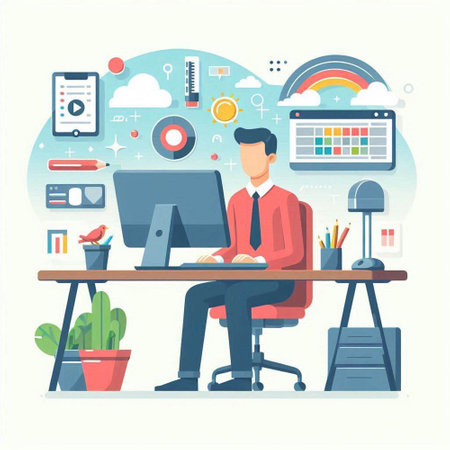The Importance of Personalized Follow-Ups
When it comes to the U.S. job market, sending a follow-up after an interview is more than just a polite gesture—its an opportunity to make a lasting impression. American employers value candidates who show genuine interest and put in extra effort to connect. Personalizing your thank-you and follow-up messages can help you stand out by showing that you listened carefully during the interview, remembered important details, and care about building a relationship.
Why Personalization Matters
In the United States, job seekers often face stiff competition. Many applicants have similar qualifications and work experiences. What can set you apart is how you communicate after the interview. A generic “thank you” email may be appreciated, but a personalized message referencing specific highlights from your conversation can leave a much stronger impact.
How Tailored Follow-Ups Build Rapport
Employers are looking for people who not only have the right skills but also fit well with their team and culture. By mentioning topics you discussed or moments you shared during the interview, you show that you were truly engaged. This helps build rapport and creates a sense of connection between you and your potential employer.
Examples: Generic vs. Personalized Follow-Up
| Generic Follow-Up | Personalized Follow-Up |
|---|---|
| Thank you for interviewing me for the marketing position. I appreciate your time. | Thank you for sharing insights about the company’s upcoming product launch during our interview. I’m excited about the possibility of bringing my campaign experience to your marketing team. |
| I look forward to hearing from you soon. | I enjoyed learning about your team’s creative brainstorming sessions and would love to contribute my ideas if given the chance. |
Key Takeaways
Personalizing your follow-up messages shows attention to detail, reinforces your interest in the role, and helps foster a positive relationship with potential employers. In the U.S., where networking and personal connections can play a major role in hiring decisions, this approach is especially effective in making you memorable and increasing your chances of success.
2. Choosing the Right Moments to Reference
One of the best ways to personalize your follow-up after an interview is by referencing memorable moments or shared interests from your conversation. This shows you were truly engaged, paying attention, and value the connection you made with the interviewer. But how do you know which moments to reference? Here’s how you can identify and highlight those special points to make your message stand out.
Spotting the Highlights During Your Interview
During your interview, pay close attention to moments when:
- You and the interviewer share a laugh or discuss a mutual hobby.
- The interviewer reacts positively to one of your answers.
- A specific project, company value, or challenge excites both of you.
- You find common ground on industry trends or professional experiences.
Table: Examples of Interview Highlights to Reference
| Type of Highlight | How to Reference in Your Follow-Up |
|---|---|
| Mutual Interests (e.g., sports, volunteering) | “I enjoyed discovering we both volunteer at local animal shelters.” |
| Memorable Conversation (e.g., a unique company project) | “Our discussion about your upcoming product launch inspired me.” |
| Shared Laughter or Light Moment | “It was great to bond over our favorite coffee spots in Seattle.” |
| Professional Alignment (e.g., shared values or goals) | “Im excited by how my passion for teamwork aligns with your companys values.” |
Why Personal References Matter
Mentioning specific highlights not only helps build rapport but also reinforces your genuine interest in the role and organization. It sets you apart from generic follow-ups that don’t connect on a personal level.
Tips for Referencing Interview Highlights
- Be Authentic: Only mention moments that genuinely stood out to you.
- Keep It Brief: One or two well-chosen highlights are enough; avoid overwhelming your message.
- Tie Back to the Role: Whenever possible, connect the highlight to your fit for the position.
Example Statement in Your Follow-Up Email:
“Thank you again for sharing insights about your team’s culture during our conversation. I appreciated learning about your recent community outreach program and would love to contribute my experience in similar initiatives if I join your team.”

3. Crafting Authentic Messages
When you’re following up after an interview, it’s important to make your message feel sincere and tailored, not generic. Personalizing your follow-up shows the interviewer that you truly care about the opportunity and helps build a stronger connection. Here are some practical tips on how to write genuine follow-ups that reflect your enthusiasm, while also respecting American workplace etiquette.
Reference Specific Interview Highlights
Mentioning something specific from your interview is a great way to show you were engaged and attentive. This could be a project the team is working on, a value the company holds, or even a small moment of shared humor. Referencing these details makes your note stand out and reminds the interviewer of your conversation.
Examples of What to Reference
| What You Can Reference | Sample Phrase |
|---|---|
| A project discussed in the interview | “I enjoyed learning about the new client onboarding process you described.” |
| A challenge faced by the team | “Our conversation about improving remote collaboration really resonated with me.” |
| A shared interest or background | “It was great to meet another alum from my university!” |
| A company value or culture point | “Your commitment to community service aligns with my own values.” |
Use Appropriate Language and Tone
Keep your language professional yet friendly. In American workplace culture, being polite, positive, and direct is valued. Avoid overly formal or stiff language—write as if you’re speaking to a respected colleague.
Dos and Don’ts of Tone in Follow-Ups
| Do | Don’t |
|---|---|
| Use “Thank you for your time” or “I appreciated our conversation” | Avoid phrases like “I demand a response” or sounding impatient |
| Express genuine interest: “I’m excited about the possibility of joining your team” | Don’t exaggerate: “This is my only dream job ever” |
| Be concise and clear in your message | Avoid long-winded explanations or apologies for following up |
Demonstrate Enthusiasm Without Overdoing It
Show your excitement about the role but keep it balanced. Let them know why you’re interested based on what you learned during the interview. For example:
Sample Statement:
“After hearing more about your team’s innovative approach to project management, I’m even more enthusiastic about contributing my skills to your company.”
4. Building Ongoing Rapport with Interviewers
Staying in touch after your interview is a great way to stand out and show your genuine interest in the position. In the U.S., building rapport doesn’t end when the interview does. Here are some easy strategies for nurturing relationships with interviewers post-interview:
Share Relevant Insights or Articles
If you come across an article, industry news, or resource that connects to a topic discussed during your interview, share it in a friendly follow-up email. This shows that you are engaged and value the conversation. For example, if you talked about new trends in technology, sharing a recent tech article can keep the dialogue going.
Connect on Professional Platforms
Platforms like LinkedIn are widely used in the U.S. professional landscape. Sending a personalized connection request after your interview is both common and appreciated. In your request, mention something specific from your conversation to make it personal.
Sample LinkedIn Message
| What To Say | Why It Works |
|---|---|
| “Hi [Name], I enjoyed our discussion about digital marketing strategies during my interview and would love to stay connected.” | Makes the message personal by referencing the interview topic. |
| “Thank you again for your insights on company culture. I look forward to following your posts!” | Shows appreciation and ongoing interest in their professional perspective. |
Keep Communication Casual Yet Professional
You don’t have to write long emails—short, thoughtful notes work best. You might send a quick message to comment on a recent company achievement or congratulate them on a milestone shared on social media.
Examples of Friendly Check-Ins:
- “Saw your company was recognized in the local press—congratulations!”
- “Just wanted to wish you a great start to the quarter!”
- “Noticed you posted an update about [project/topic]—very inspiring!”
These small gestures help maintain a positive connection and remind interviewers of your enthusiasm for the role and organization.
5. Timing and Frequency of Follow-Ups
When it comes to personalizing your follow-up after an interview, knowing the right timing and how often to reach out is essential. In American business culture, following up shows enthusiasm and professionalism—but too many messages or poor timing can come across as pushy. Here’s how you can strike the right balance while referencing interview highlights and building rapport.
Best Practices for When to Follow Up
| Action | Recommended Timing | Tips for Personalization |
|---|---|---|
| Thank You Email | Within 24 hours after the interview | Mention a specific topic or moment from your conversation to show genuine interest |
| First Follow-Up | About 1 week after the interview if you haven’t heard back | Reference a highlight from the interview and politely ask about next steps |
| Second Follow-Up (if needed) | One more week later (2 weeks after the interview) | Express continued interest and briefly mention what excites you about the role based on your discussion |
How Often Should You Follow Up?
Generally, one thank you email and one or two follow-ups are enough. More than that may be seen as excessive in the U.S. workplace. Each message should add value—don’t just repeat yourself. Instead, refer back to something meaningful from your interview or share new information that could strengthen your candidacy.
Pacing Your Communication: Do’s and Don’ts
- Do: Space out your follow-ups by at least a week unless the employer gave you a specific timeline.
- Do: Keep your tone friendly, professional, and appreciative each time you reach out.
- Don’t: Send daily emails or call repeatedly—this can feel overwhelming to hiring managers.
- Don’t: Forget to personalize; avoid generic statements and use details from your interview to stand out.
Aligning with American Business Norms
In the U.S., persistence is appreciated when it’s respectful and purposeful. By following up thoughtfully, referencing memorable parts of your interview, and showing genuine interest without overdoing it, you’ll reinforce a positive impression and keep building rapport with potential employers.


